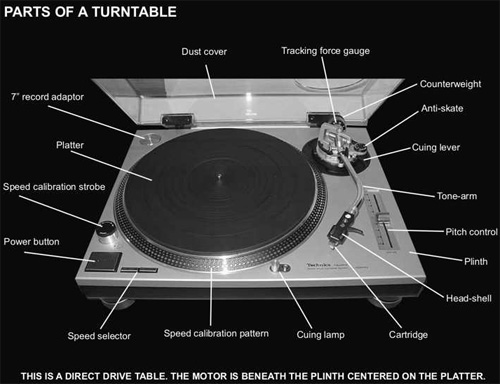Entries Tagged 'Technology' ↓
July 9th, 2009 — Blogs, Internet, Race, Technology, TV

I honestly did not expect this.
After I posted “Black Like @KirstieAlley: Twittering About Race with the Fat Actress” yesterday, I manually sent out one tweet, at 5:55 pm ET, announcing the posting. (My blog automatically sent out another one 45 minutes later.) I then left the house to take care of some business, getting back a little over two hours later. I went to my computer, and logged on to Twitter.
Big mistake.
Continue reading →
July 3rd, 2009 — Internet, Media, NONFICTION, Technology

The day Michael Jackson died, it was a message on the social messaging service, Twitter, above, from TMZ head Harvey Levin that started the massive cascade of fear, grief, reminiscence, and adoration that ultimately swept the globe. Levin’s tweet, as Twitter messages are called, was a mere 77 characters in length, just a bit more than half the service’s maximum, 140 characters-per-message capacity. Rarely does such a small amount of text have such an immense, and rapid, effect.
Yet, whether in the death of a celebrity, or an uprising in a Middle eastern country—Twitter has been central, in terms of getting news out of that land, after their disrupted elections—the technology is making itself felt. In her new volume, The Twitter Book, co-written with O’Reilly Media founder Tim O’Reilly, Sarah Milstein talks about what Twitter is, how to get on it, and how to make it work for you. It’s a convenient to carry, easily-read book, just right for the neophyte, but with enough substance for power-users. Indeed, as the 21st person on the network—her boyfriend was an engineer with the young company—and a well-know consultant and author, Milstein definitely knows her stuff…and her Twitter.
Sarah Miltein is the guest today on my WBAI-NY / 99.5 FM radio show, NONFICTION, this afternoon, Friday, July 3rd, at 2 pm ET.
You can hear her ideas by tuning in at 2 pm. If you’re outside of the New York tri-state, check out our stream on the web. If you miss the live show, dig into our archives for up to 90 days after broadcast.
May 21st, 2009 — Art, Technology

Vancouver-based technical artist James Provost possesses a smooth, accurate style that renders complex technology visually straightforward and, thus, comprehensible. What attracted me to his work was this gorgeous image of a deadly taser, but what kept me there was this vision of the BigDog robotic pack mule, above, done for Boston Dynamics. Scanning his portfolio’s dramatic cutaways reveals a gift for variety that marks Provost’s as a talent to watch.
[via behance.net]
March 27th, 2009 — Books, NONFICTION, Technology

What do you see when you look at this picture?
Most would say they see a tranquil fall scene, perhaps somewhere in New England, and an empty road beckoning them to great times and even better memories. Of course, they’d be correct.
Few would say that they’re looking at an interface. When most people think of that word, they think of the stuff that you’re probably dealing with right now–clicking computer mouses, dragging cursors, scrolling bars, keyboards, the screen, etc.–all of which are tools that let you get to the motherboard, hard drive, CPU, and data that is “really” your computer.
 But an interface is precisely what you’re seeing in the image. In fact, you’re seeing at least two: the forest, and then the road. Even more, depending on how you see the forest, and what you notice when you do, right, one could argue that you’re looking at, not just one but, a series of complex independent interfaces–ones that, together, we read as “nature”–all of them enabling access to a host of subsystems that trap moisture, scrub air, regulate and capture sunlight, house animals, fertilize soil, stabilize ambient temperature, ablate wind, feed users, etc., etc. Indeed, nature is continuously “computing.” It’s just so low-key about it that not only do we not notice, we don’t even think of it this way. (Plus, nature never crashes.)
But an interface is precisely what you’re seeing in the image. In fact, you’re seeing at least two: the forest, and then the road. Even more, depending on how you see the forest, and what you notice when you do, right, one could argue that you’re looking at, not just one but, a series of complex independent interfaces–ones that, together, we read as “nature”–all of them enabling access to a host of subsystems that trap moisture, scrub air, regulate and capture sunlight, house animals, fertilize soil, stabilize ambient temperature, ablate wind, feed users, etc., etc. Indeed, nature is continuously “computing.” It’s just so low-key about it that not only do we not notice, we don’t even think of it this way. (Plus, nature never crashes.)
What would it take to create hardware and software that do what nature’s do: Vanish, so that you don’t even perceive them any more?
In his book, Everyware: The Dawning Age of Ubiquitous Computing, author Adam Greenfield argues for a nearing era of “ubiquitous computing…a computing without computers, where information processing has diffused into everyday life, and virtually disappeared from view.”
 Like Martin Luther, right, who wrought a revolution when he nailed his 95 theses to the door of the castle church in Wittenberg, Greenfield has divided his text into 81 “‘theses on the next computing,’ divided into six sections.” As he says in the intro to his book,
Like Martin Luther, right, who wrought a revolution when he nailed his 95 theses to the door of the castle church in Wittenberg, Greenfield has divided his text into 81 “‘theses on the next computing,’ divided into six sections.” As he says in the intro to his book,
This book is an attempt to describe the form computing will take in the next few years. Specifically, it’s about a vision of processing power so distributed throughout the environment that computers per se effectively disappear. It’s about the enormous consequences this disappearance has for the kinds of tasks computers are applied to, for the way we use them, and for what we understand them to be.
Although aspects of this vision have been called a variety of names – ubiquitous computing, pervasive computing, physical computing, tangible media, and so on – I think of each as a facet of one coherent paradigm of interaction that I call everyware.
How possible is this, or likely? Even more, what will it mean for human culture when our computers become so powerful that they just blend into the woodwork, so to speak?
Adam Greenfield is the guest today on this repeat edition of my WBAI-NY / 99.5 FM radio show, NONFICTION, this afternoon, Friday, March 27, at 2 pm ET.
You can hear his ideas by tuning in at 2 pm. If you’re outside of the New York tri-state, check out our stream on the web. If you miss the live show, dig into our archives for up to 90 days after broadcast.
March 26th, 2009 — Hip-Hop, Media, Music, Technology

Why did hip-hop succeed?
That’s probably the first question I’m going to be asking tonight at the free Future of Music 4: The Rise of Hip Hop and its Influence on Other Media panel, 8:30 pm, at Tekserve (119 W. 23rd St., bet. 6th & 7th Aves.; 212-929-3645), New York City’s premier Apple retail and repair store. My job is moderating a discussion between DMC, aka Darryl McDaniels of Run-DMC fame; the pugilistic Freddie Foxxx, aka Bumpy Knuckles; and Troy Hightower, of Hightower Productions, the renowned audio engineering firm. I’m expecting a rich convo from this power-packed trio.
 Some background about “Future of Music”: We’ve been hosting these events at Tekserve, right, more or less bimonthly, as of this year. The turnout’s been consistently excellent, and I’ve been having a fantastic time with the folks there. Tekserve’s a great shop to roll through, ask questions, or just see the latest toys. It’s a friendly, helpful kind of establishment, of the sort that you don’t see a lot anymore, especially around anything having to do with computers. Hey: I’m not just president of the panels we do: I’m a client. In fact, every post I’ve ever written for MEDIA ASSASSIN, including this one, was created with a PowerBook G4 12″ that I bought at Tekserve four years ago, and it’s still clicking along. Consider me one of the faithful, as I expect we’re gonna meet, and make, more tonight.
Some background about “Future of Music”: We’ve been hosting these events at Tekserve, right, more or less bimonthly, as of this year. The turnout’s been consistently excellent, and I’ve been having a fantastic time with the folks there. Tekserve’s a great shop to roll through, ask questions, or just see the latest toys. It’s a friendly, helpful kind of establishment, of the sort that you don’t see a lot anymore, especially around anything having to do with computers. Hey: I’m not just president of the panels we do: I’m a client. In fact, every post I’ve ever written for MEDIA ASSASSIN, including this one, was created with a PowerBook G4 12″ that I bought at Tekserve four years ago, and it’s still clicking along. Consider me one of the faithful, as I expect we’re gonna meet, and make, more tonight.
So, first I’ll talk with the panel: What is the source of hip-hop’s influence? How has it affected the media we consume? Where do we see the greatest resistance to its clout, and what is at risk where it is denied? Then we’ll take questions from you, our always-curious audience. The issues are serious, the talent is legendary, and you rarely get to just ask these guys questions, so represent.
January 28th, 2009 — Hip-Hop, Technology

I’m doing a couple of public events tonight and tomorrow, here in New York, and would love to see you in the place.
• First, tonight, Wednesday, January 28, at 7:30 pm, I’m at the Brecht Forum in discussion with cultural anthropology doctoral student / blogger Michael Partis (Ambitionz as a Writer) and writer / poet Anika Lani Haynes, for a talk titled “Biggie, Brooklyn and the World: Conversations on the NOTORIOUS.” It’s in part a response to the eponymous new biopic on the Notorious B.I.G., the powerful hip-hop vocalist who, after releasing two astounding albums, was murdered in Los Angeles in 1997, at the age of 24. (That’s actor / rapper Jamal “Gravy” Woolard, above, as he portrays the artist in the film.)
Say the promo materials:
With the release of Notorious, once again the famed rapper NOTORIOUS B.I.G. has taken center stage in the consciousness of the hip hop generation. Tonight our panel of experts will examine the film as well as the living contradictions of Notorious B.I.G. How do we understand Biggie’s relationship with Lil’ Kim and Faith Evans inform conversations about overall relationship between Black men and women? How does Biggie’s life play out hip hop in the age and crack? And finally in what ways does Biggie’s career mark the end of hip hop era and the presence of Black death? “Biggie, Brooklyn and the World” will bring all of these elements together in a conversation on hip-hop, past, present and future.
There’s a suggested donation of $6-$15, but no one will turned away.
The Brecht Forum is at 451 West Street bet. Bank and Bethune, (212) 242-4201; click here for directions.
• Then, tomorrow night, Thursday, January 29, Tekserve, New York’s preeminent Apple retail and repair shop, will be hosting the third in its ongoing “The Future of Music” series of panels, examining the way technology is rapidly evolving the entire realm of audio entertainment. Guests will include Sadat X (vocalist, Brand Nubian), Claudia Gonson (pianist/drummer/backing vocalist, The Magnetic Fields), Adam Farrell (head of marketing, Beggars Group), and Peter Rojas (founder of the tech blogs Gizmodo, Engadget, and Joystiq).
I’ll be moderating, and if past panels—featuring such luminaries as Chic founder Nile Rodgers, recording engineer Bob Power, and Bomb Squad producer Hank Shocklee—have been any indication, the conversation will be animated, fast-paced, and provocative. Get there, if you can.
December 30th, 2008 — Art, Technology

People in hip-hop say that the streets don’t lie, and that if you want to know what’s really going on, you’ve gotta take it to the streets. Well, if true, that should make data visualist Ben Fry rap’s go-to guy. As he announces on his web site, he’s created, above, a map of
all of the streets in the lower 48 United States: an image of 26 million individual road segments. No other features (such as outlines or geographic features) have been added to this image, however they emerge as roads avoid mountains, and sparse areas convey low population. This began as an example I created for a student in the fall of 2006, and I just recently got a chance to document it properly.
Alaska and Hawaii were initially left out for simplicity’s sake…. Unfortunately, the two states don’t “work” because there aren’t enough roads to outline their shape, so I left them out permanently.
You have to blow up a section to really get it, though. Take a look at this enlargement of the Great Lakes area, for example, or this one for San Francisco. See what I mean? Talk about keepin’ it real.
[via VisualComplexity.com]
November 25th, 2008 — Technology

Listing for about $430, Optoma USA’s PK-101 PICO Pocket Projector puts the power of DLP projection inside a 4 oz., 4″ x 2″ box. Or, as they say,
Smaller than most smart phones, this new micro-portable projector fits in your palm and is the ideal companion to ultra-portable media devices such as iPods®, PDA’s, smart phones and digital cameras.
 When connected to an ultra-mobile device, the four-ounce Optoma Pico Projector allows users to share photos and videos, and enjoy a far better visual experience with an image that is up to 100 times larger than the small screen of the source device.
When connected to an ultra-mobile device, the four-ounce Optoma Pico Projector allows users to share photos and videos, and enjoy a far better visual experience with an image that is up to 100 times larger than the small screen of the source device.
Continue reading →
November 24th, 2008 — Photography, Technology

Started in 1756 as an optics manufacturer, the German company Voigtländer didn’t even make its first metal camera until nearly a huindred years later, in 1849. Their devices quickly acquired a global reputation for astoundingly sharp images, though, courtesy of the firm’s revolutionary Petzval lenses.
Over the decades, Voigtländer created a number of technically innovative products, like their 1965 Vitrona, the first 35mm compact camera with a built-in electronic flash. The post-World War II mega-dominance of the photography biz by Japanese camera manufacturers, however, ultimately led to their demise and to Cosina’s 1999 acquisition of the Voigtländer name.

In the nearly ten years since, though, Cosina’s produced several solid-body, Leica screw mount film cameras under Voigtländer’s famed marque. Now, it looks like they’re truly feeling their royal oats, having recently announced the upcoming 2009 release of the Voigtländer Bessa III, above and right.
Continue reading →
November 11th, 2008 — Technology

I first got a hint of the fi-yaah! Apple’s “One App At a Time” campaign was working with while watching the Olympics, when I peeped their iPhone 3G Lonely Planet Mandarin Audiobook commercial. The software appears to hold hundreds of common Chinese phrases, all spoken fluently by natives. One can play any of them back upon command, seamlessly turning communication within a complex tongue into something as easy as pointing.
 So they had me at hello, but, yo: That iPhone 3G Shazam app commercial, above, where you put the phone up to a music source, it tells you what the song is you’re hearing, and even takes you to iTunes to buy a copy, is one of the frostiest things I’ve ever seen. (Apple-style, in the advertisement, the track Shazam detects is the very one playing in the ad advertising Shazam, the Submarines’ yummy, Beatlesesque “You, Me, and the Bourgeoisie.”)
So they had me at hello, but, yo: That iPhone 3G Shazam app commercial, above, where you put the phone up to a music source, it tells you what the song is you’re hearing, and even takes you to iTunes to buy a copy, is one of the frostiest things I’ve ever seen. (Apple-style, in the advertisement, the track Shazam detects is the very one playing in the ad advertising Shazam, the Submarines’ yummy, Beatlesesque “You, Me, and the Bourgeoisie.”)
Has anybody gotten this toy yet? I noticed the “Sequence Shortened” copy in the ad, above, but still: Is it as niiiiiiiiice to use as it looks?
















